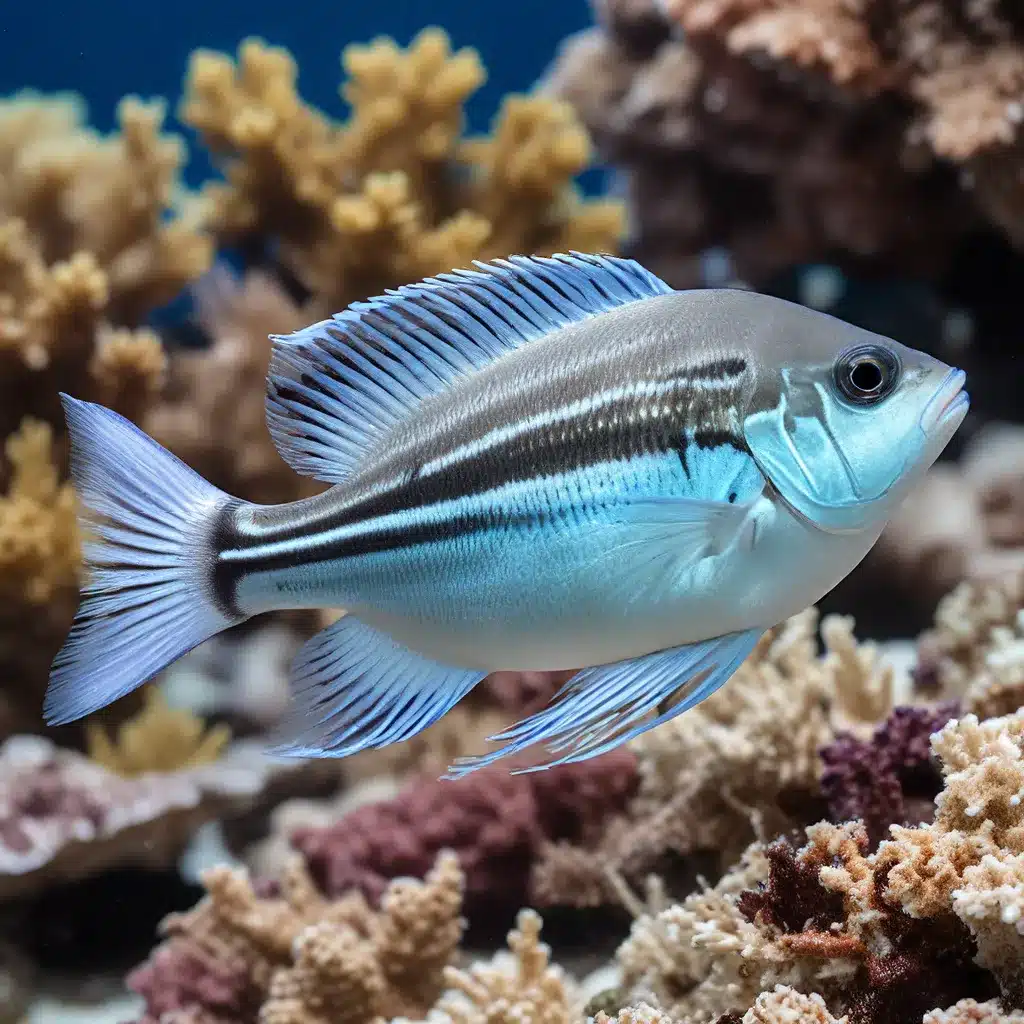
Saltwater aquarium enthusiasts are captivated by the vibrant, diverse, and often enigmatic behaviors of marine fish. From the mesmerizing courtship dances of clownfish to the intricate territorial disputes among angelfish, these underwater inhabitants display a remarkable array of social interactions and survival strategies. As avid aquarists, understanding the nuances of saltwater fish behavior is the key to creating thriving, harmonious aquarium ecosystems.
Exploring the Language of Saltwater Fish
Just as whales communicate through their captivating songs, many species of saltwater fish utilize a diverse repertoire of vocalizations and non-verbal cues to convey information, establish dominance, and coordinate social activities. By learning to “decode” these underwater languages, aquarists can gain invaluable insights that inform their fish-keeping practices.
Research conducted by the National Sea Turtle Genetics Laboratory has shed light on the remarkable complexity of fish communication. Contrary to popular belief, fish are not silent creatures; they employ a variety of sounds, including grunts, clicks, and even “singing” to convey messages to their peers. These vocalizations can signal territorial boundaries, advertise spawning readiness, or warn of potential threats.
Furthermore, saltwater fish utilize an array of visual cues, such as body coloration, fin movements, and subtle postural changes, to communicate their intentions and social status. By observing these behavioral patterns, aquarists can better understand the hierarchies, mating rituals, and feeding strategies of the inhabitants in their aquarium.
Fostering Natural Behaviors in the Home Aquarium
Creating an environment that encourages natural fish behaviors is a hallmark of successful saltwater aquarium management. Mimicking the underwater ecosystems that these fish have evolved to thrive in is crucial for promoting their overall well-being and allowing them to express their full range of behaviors.
One of the key aspects of creating a fish-friendly environment is replicating the appropriate water parameters. Factors such as temperature, pH, salinity, and dissolved oxygen levels can significantly impact the comfort and behavior of saltwater species. By closely monitoring and maintaining these water quality conditions, aquarists can ensure that their fish are able to exhibit their natural behaviors without the stress of unfavorable environmental conditions.
Another important consideration is the aquarium’s physical design and layout. Incorporating natural-looking rock formations, diverse substrate types, and strategically placed hiding spots can provide the necessary hiding places, territories, and breeding grounds that saltwater fish require. King Aquarium offers a wide range of aquascaping materials and design ideas to help aquarists create visually stunning and behaviorally stimulating environments for their saltwater inhabitants.
Observing and Understanding Saltwater Fish Behavior
Becoming a skilled observer of saltwater fish behavior is essential for aquarists who want to maintain healthy, thriving aquariums. By closely watching the interactions, feeding patterns, and daily routines of their fish, hobbyists can gain invaluable insights that inform their care and management strategies.
One of the most fascinating aspects of saltwater fish behavior is the intricate social dynamics that can emerge within an aquarium. Territorial disputes, courtship rituals, and complex hierarchies are all common behaviors that aquarists may witness. Understanding the underlying motivations and communication methods behind these interactions can help aquarists introduce new fish, manage tank aggression, and foster a harmonious community.
Observing feeding behaviors can also provide valuable information about the specific needs and preferences of individual species. Paying attention to which fish are most successful in obtaining food, how they compete for resources, and their feeding patterns can help aquarists optimize their feeding regimes and ensure that all inhabitants are receiving the proper nutrition.
Applying Behavioral Knowledge to Aquarium Design and Management
Armed with a deeper understanding of saltwater fish behavior, aquarists can leverage this knowledge to create more naturalistic and thriving aquarium environments. By tailoring tank setups, water parameters, and care routines to the specific needs and tendencies of their fish, hobbyists can promote natural behaviors and minimize stress-induced aggression or disease.
For example, incorporating species-specific hiding spots, territorial markers, and breeding grounds can encourage natural behaviors like courtship, spawning, and parental care. Paying attention to the social hierarchies and dominance displays within the aquarium can inform decisions about stocking densities and compatible tank mates.
Moreover, understanding the unique feeding habits and nutritional requirements of different saltwater fish species can help aquarists design and implement feeding schedules that cater to the specific needs of their inhabitants. This level of attention to detail can lead to healthier, more vibrant fish and a more visually stunning and harmonious aquarium ecosystem.
As the field of saltwater aquarium keeping continues to evolve, the importance of understanding fish behavior has become increasingly clear. By decoding the mysteries of saltwater fish communication and social dynamics, aquarists can unlock the keys to creating thriving, naturalistic home aquarium environments that allow their beloved inhabitants to thrive. With a keen eye, an inquisitive mind, and a dedication to providing the best possible care, saltwater aquarists can embark on a captivating journey of discovery and create truly remarkable underwater habitats.

